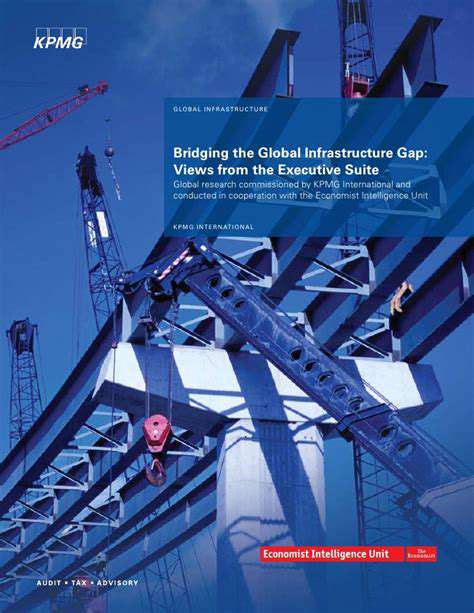Decentralized Data Processing
Edge computing, at its core, represents a significant shift from centralized data processing models. Instead of sending all data to a central server for analysis, edge devices process information locally. This decentralized approach offers substantial advantages, particularly in scenarios where latency is critical or bandwidth is limited. Think of a self-driving car needing to react to a sudden obstacle. Sending data to a remote server for analysis and then receiving instructions back would be far too slow. Edge computing allows the car to process the information on-site, enabling much faster responses.
Enhanced Real-Time Responsiveness
One of the most compelling benefits of edge computing is its ability to significantly enhance real-time responsiveness. By processing data closer to the source, edge devices drastically reduce latency. This is crucial for applications demanding immediate actions, such as autonomous vehicles, industrial control systems, and real-time video streaming. The speed and agility provided by edge computing are paramount in these situations, enabling faster decision-making and smoother operations.
Improved Data Security and Privacy
Decentralized processing inherently improves data security and privacy. Sensitive data is processed locally, minimizing the risk of breaches during transmission to a central server. This is particularly important in industries with stringent data protection regulations. By keeping data on-site, edge computing enables organizations to maintain greater control over their information, thereby mitigating security risks and upholding compliance standards.
Reduced Network Congestion
The sheer volume of data generated by modern applications can overwhelm traditional centralized networks. Edge computing helps alleviate this congestion by processing data closer to the source. This reduction in network traffic translates to lower bandwidth requirements, improved network performance, and cost savings for organizations. Less traffic across the network means more efficient use of available bandwidth and fewer bottlenecks.
Cost-Effectiveness and Scalability
Edge computing can offer significant cost advantages by reducing the need for expensive and extensive data transmission and storage infrastructure. Processing data locally also lowers cloud costs, particularly for applications with high data volumes. This approach provides a more scalable solution, allowing for easy expansion and adaptation to changing data needs. The scalability aspect is crucial as the complexity of autonomous systems and their data requirements continue to evolve.
Optimized Resource Utilization
Edge computing enables optimized resource utilization by distributing processing power and storage capacity across the network. This decentralized approach empowers edge devices to perform specific tasks based on their capabilities. This localized processing allows for better resource allocation and efficiency, as devices can focus on their specific tasks without overloading central servers.
Enhanced System Reliability
The distributed nature of edge computing enhances system reliability. If one part of the network experiences an outage or interruption, the localized processing at the edge can still function. This redundancy significantly improves the resilience of autonomous systems and other critical applications. The decentralization of processing ensures that critical operations continue even when there's a failure at a central point.
Optimizing Performance and Scalability with Edge Computing

Optimizing for Speed
Achieving optimal performance is crucial for any application, especially in today's demanding environments. Efficient code execution is paramount, leading to faster response times and a smoother user experience. This involves careful consideration of algorithms, data structures, and the overall architecture of the system. Optimizations should be targeted at the areas that have the greatest impact on performance, focusing on bottlenecks and areas prone to resource contention.
Various techniques can be employed to enhance speed. Profiling tools allow for the identification of performance bottlenecks, enabling developers to pinpoint areas requiring attention. Leveraging caching mechanisms can significantly reduce the load on the system by storing frequently accessed data. Properly configured databases and optimized query structures are also essential for rapid data retrieval.
Scaling for Growth
As applications grow, their ability to handle increased workloads becomes critical. Scalability ensures that the system can adapt to changing demands without compromising performance. This involves planning for future growth by implementing architectures that can be easily scaled horizontally or vertically. The choice of infrastructure, whether cloud-based or on-premises, plays a significant role in achieving scalability.
Horizontal scaling involves distributing the workload across multiple servers, while vertical scaling enhances the capacity of individual servers. Understanding the characteristics of the workload is crucial in determining the most effective scaling strategy. Load balancing techniques are essential for distributing traffic evenly across servers, preventing bottlenecks and ensuring consistent performance under pressure.
Resource Management
Effective resource management is vital for sustained performance and scalability. This encompasses careful allocation of memory, processing power, and network bandwidth. Proper utilization of system resources minimizes wasted capacity and enhances overall efficiency. Monitoring resource consumption in real-time allows for proactive intervention and adjustment to prevent performance degradation.
Efficient memory management is critical for preventing memory leaks and ensuring that applications don't consume excessive resources. Optimizing disk I/O operations can reduce latency and improve overall system responsiveness. Careful consideration of network protocols and configurations ensures efficient data transfer, minimizing latency and maximizing throughput.
Maintaining Stability
Ensuring the stability of an application is paramount for providing a reliable user experience. Robust error handling and recovery mechanisms are essential components of a stable system. Implementations should anticipate potential failures and have strategies for handling them gracefully. This includes carefully designed error handling routines and well-defined fallback mechanisms.
Continuous monitoring and logging are critical for identifying and resolving issues. Comprehensive monitoring tools provide insights into system performance, resource usage, and potential problems. Regular maintenance and updates help to address vulnerabilities and ensure the system remains secure and stable over time.












